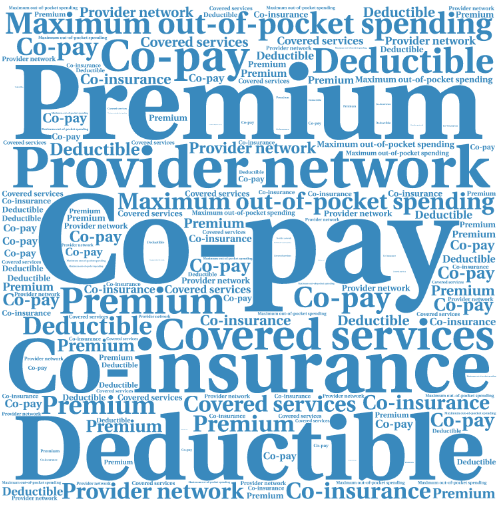

By Shao-Chee Sim
EHF’s VP for Applied Research
Be honest. If you had to take a test on knowing the ins and out of health insurance terms, would you pass?
Here’s the test vocabulary: premium, deductible, co-pay, co-insurance, maximum annual out-of-pocket spending, provider network and covered services.
Co-pay, premium and deductible are probably terms that I use in my conversations with family members, friends and colleagues, especially when I need to choose a health plan and/or a doctor. However, co-insurance and maximum out of pocket expenses are not part of my vocabulary and I often find myself having to go to Google or ask others what these terms mean. I also tend to overlook information about provider network and covered services.
So, if I had to take the health insurance literacy test, I probably would get an average score.
EHF’s latest research found I’m not alone. In fact, our report showed 25% of Texans say they don’t understand these basic health insurance terms. And we found the lack of understanding is much worse for Texans who are uninsured, make an annual income of less than $16,000 or are Hispanic.
An important first step for us to begin the conversation about health insurance literacy is to first understand these terms in everyday language. I find the definitions provided by healthcare.gov to be very helpful:
Premium: The amount that must be paid for your health insurance or plan. You and/or your employer usually pay it monthly, quarterly or yearly.
Deductible: The amount you owe for covered health care services before your health insurance plan begins to pay. For example, if your deductible is $1,000, your plan won’t pay anything until you’ve paid $1,000 for covered services.
Co-pay: A fixed amount (for example, $15) you pay for a covered health care service, usually when you get the service.
Co-insurance: Your share of the costs of a covered health care service, calculated as a percentage (for example, 20%) of the allowed amount for the service. You pay coinsurance after you’ve met your deductible. For example, if the health insurance plan’s allowed amount for an office visit is $100 and you’ve met your deductible, your 20% co-insurance payment would be $20. The health insurance plan pays the rest.
Maximum annual out of pocket spending: The most you’ll have to pay for covered services in the annual policy period. After you reach this amount, your health plan will pay 100% for covered essential health benefits.
Provider network: A list of the doctors, other health care providers, and hospitals that a plan has contracted with to provide medical care to its members. These providers are called “network providers” or “in-network providers.” A provider that hasn’t contracted with the plan is called an “out-of-network provider.”
Covered services: Your health insurance policy is an agreement between you and your insurance plan. The policy lists a package of medical benefits such as tests, drugs and treatment services. The insurance plan agrees to cover the cost of certain benefits listed in your policy. These are called “covered services.”
The website www.healthcare.gov/glossary/ provides definitions of many more health insurance terms. I also encourage you to visit the website of the health insurance plan you have selected, speak to the enrollment navigator, or even ask staff at the doctor offices when you do not understand certain health insurance terms.
To the newly insured population, understanding these terms is a very important first step in becoming informed healthcare consumers in your community. These numbers also illustrate the need to offer education and outreach that targets the uninsured. It’s critical that they better understand these terms, so they can better understand their possible health insurance options.